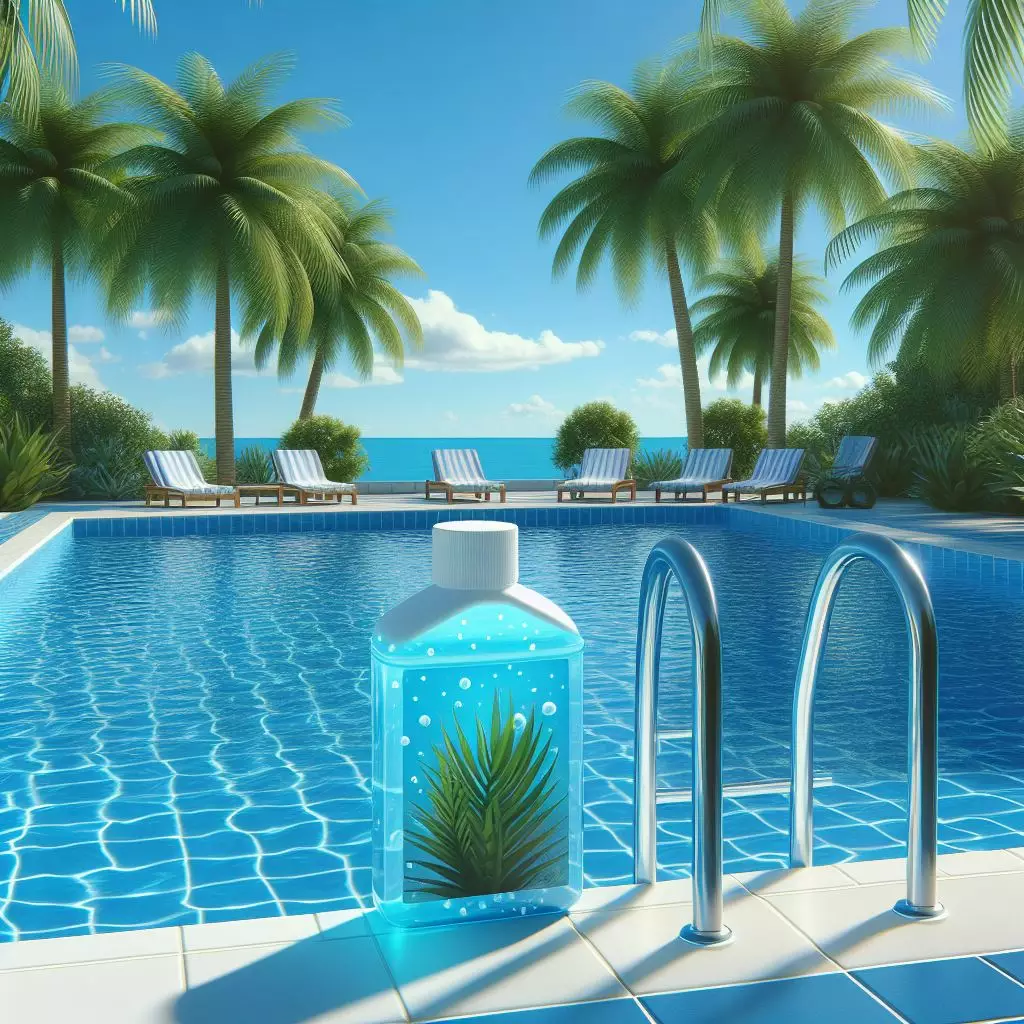Welcome to the world of pool maintenance, where every detail matters to ensure crystal-clear water and a safe swimming environment. One of the most common challenges faced by pool owners is dealing with green algae infestations, which can quickly turn a pristine pool into a murky mess. Fortunately, pool algaecides offer an effective solution to combat algae growth and restore your pool’s beauty. In this comprehensive guide, we will delve into the intricacies of using pool algaecide correctly, providing you with the knowledge and techniques to tackle green algae and maintain a sparkling clean pool.

Green Algae
Before diving into the specifics of pool algaecides, it’s essential to understand the nature of green algae. Green algae are microscopic organisms that thrive in warm, stagnant water with abundant sunlight. They can quickly multiply and form unsightly green patches on pool surfaces, including walls, floors, and waterline tiles. Recognizing the early signs of algae growth is crucial for prompt intervention and effective treatment.
Types of Pool Algaecides
Quaternary Ammonium Compounds (QACs): QACs are one of the most commonly used algaecides in swimming pools. They work by disrupting the cellular structure of algae, effectively killing them and preventing further growth. QAC-based algaecides are generally safe for use in all types of pools and are effective against a wide range of algae species.
Polymer-Based Algaecides: Polymer-based algaecides form a protective barrier on pool surfaces, making it difficult for algae to attach and proliferate. These algaecides are known for their long-lasting effects and are ideal for preventing algae regrowth after treatment.
Copper-Based Algaecides: Copper-based algaecides utilize copper ions to inhibit algae growth. They are particularly effective against stubborn algae strains and can provide lasting protection against future infestations. However, excessive use of copper-based algaecides can lead to staining of pool surfaces, so careful dosage is essential.
Chlorine-Based Algaecides: Chlorine-based algaecides combine the algae-fighting properties of chlorine with additional surfactants and additives for enhanced effectiveness. These algaecides are suitable for shock treatments and can help maintain chlorine levels while controlling algae growth.
Proper Application Techniques
Preparation: Before applying algaecide, ensure that the pool’s pH and chlorine levels are balanced within the recommended range. Lowering the pH slightly can improve the effectiveness of the algaecide.
Dosage: Follow the manufacturer’s instructions regarding the correct dosage of algaecide based on your pool’s size and the severity of the algae infestation. Avoid overdosing, as this can lead to chemical imbalances and other issues.
Distribution: Pour the algaecide evenly around the perimeter of the pool while the filtration system is running to ensure thorough distribution. Pay special attention to areas prone to algae growth, such as shaded spots and corners.
Brushing: Use a pool brush to agitate the water and disperse the algaecide throughout the pool. This helps break up algae colonies and ensures maximum contact between the algaecide and the algae.
Filtration: Run the pool pump and filtration system continuously for at least 24-48 hours after applying the algaecide to circulate the water and remove dead algae particles. Backwash the filter if necessary to maintain optimal filtration efficiency.
Retreatment: For severe algae infestations, repeat the algaecide treatment after 5-7 days to eliminate any remaining algae and prevent regrowth. Monitor the pool regularly and treat promptly at the first sign of algae recurrence.
Preventive Measures
Maintain Proper Water Chemistry: Regularly test and balance the pool’s pH, alkalinity, and sanitizer levels to create an environment unfavorable for algae growth.
Routine Cleaning: Skim the pool surface, vacuum the pool floor, and brush the walls and tiles regularly to remove debris and prevent algae buildup.
Sunlight Management: Limit prolonged exposure to direct sunlight by using pool covers or installing shade structures to reduce algae-promoting conditions.
Algaecide Maintenance: Incorporate a weekly or bi-weekly algaecide treatment into your pool maintenance routine, even when algae are not present, to proactively prevent infestations.
Conclusion
In conclusion, mastering the art of using pool algaecide is essential for maintaining a pristine swimming pool free from green algae. By understanding the different types of algaecides, proper application techniques, and preventive measures, pool owners can effectively combat algae growth and enjoy a clean and inviting pool year-round. Remember to choose the right algaecide for your pool’s needs, follow recommended dosage and application guidelines, and stay proactive in your maintenance efforts to keep algae at bay. With diligence and attention to detail, you can achieve a sparkling oasis that provides endless enjoyment for you and your family.

 Instant
Quote
Instant
Quote Email
Us
Email
Us